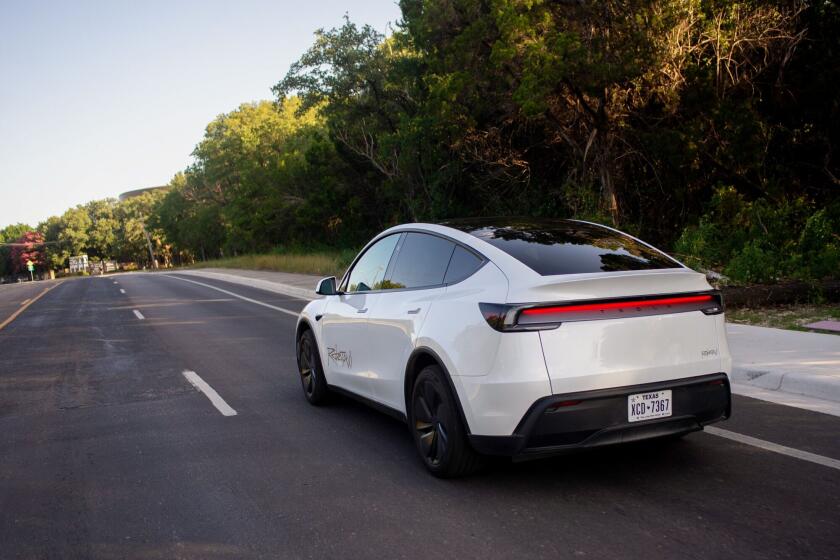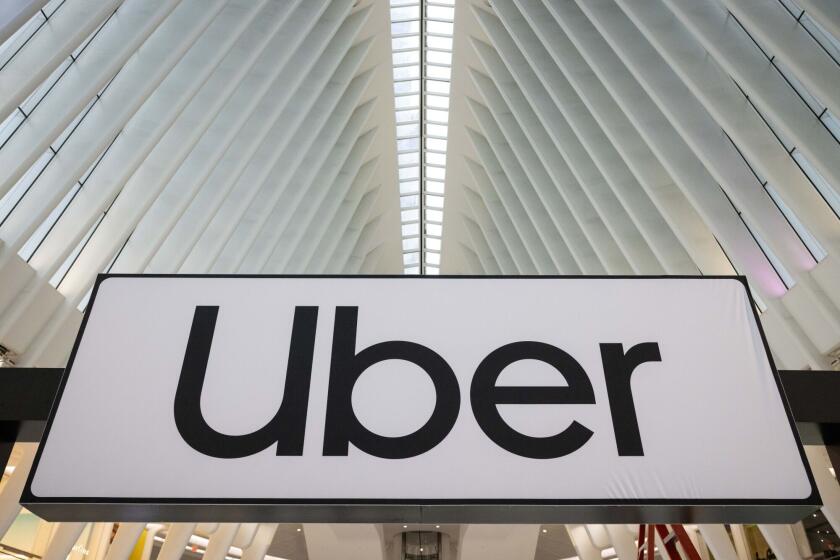Brea’s Traffic Headache: A Highway at Capacity
- Share via
Brea’s congested streets have city officials pointing fingers to out-of-towners.
At crunch time, as many as 1,600 vehicles an hour use winding and rural Carbon Canyon Road, which leads from San Bernardino County to the Orange Freeway. But the two-lane highway was designed to handle only a few hundred an hour, so the road and the intersecting streets along the way end up clogged.
City officials say the congestion is the principal source of Brea’s steadily worsening traffic. And they say the highway can’t be made wide enough to serve the ever-growing number of commuters moving to new, more affordable housing in the San Bernardino and Riverside areas.
The best solution, regional transportation officials say, is a mass-transit system that would get a large share of commuters off the road altogether.
With its industrial complexes, corporate offices and the Brea Mall and other retail outlets, the city of 36,000 residents is a hub of jobs for out-of-towners. Its daytime population swells to about 100,000.
Adding to that are others who pass through the city to avoid equally frustrating congestion on the Riverside and Pomona freeways.
The Southern California Assn. of Governments, which studies regional issues among five Southland counties, has recommended that Metrolink rail service be extended into San Bernardino and Riverside counties, and that express bus lines be added between Chino Hills and Irvine to ease traffic on Carbon Canyon Road.
Proposed high-speed rail and truck lanes for the Pomona Freeway could ease congestion and persuade Carbon Canyon Road commuters to take the train or freeway.
At some point, Riverside County is planning to widen its portion of the two-lane Corona Expressway to create a better link to the Riverside Freeway and lure more motorists there, and possibly onto Orange County’s Eastern toll road.
In the meantime, local officials can offer few solutions to frustrated residents. At a recent meeting, City Council members joked wryly that Carbon Canyon Road, which has received failing grades in traffic studies over the past 10 years, should get an “F-minus” this year.
Gary Goff, assistant superintendent of Brea Olinda Unified School District, often hears students and parents complain about their difficulty in getting to Brea Olinda High School, accessible only from Carbon Canyon Road.
When he talks about it, his voice drops in reserved frustration. What should be a 10- or 15-minute drive across town during the mornings and late afternoons can become a half-hour exercise, or longer, in riding the brake.
There are so many cars, Goff says, that he wouldn’t think of telling students to ride their bikes to school. “It’s not safe.”
Mayor Bev Perry has represented the city for the last seven years on the Southern California Council of Governments, another that studies regional issues.
It has commissioned a regional transportation survey, the “Four Corners Study,” which is due in May. The report will focus on traffic in the area where the counties of Los Angeles, Orange, Riverside and San Bernardino meet, and the flow of traffic among the Barstow, Orange, Riverside and San Bernardino freeways.
Perry said early reports from the study indicate that most of Brea’s traffic problems can’t be solved conventionally or locally. “It goes beyond building roads,” she said. “It’s a combination of where do people live and where do people work.”
Perry voiced frustration with housing developments that have been approved for neighboring Chino Hills.
“They send us their environmental reports and it’s like, ‘Come on, guys,’ ” she said. “They’re building a ton of housing out there and [traffic is] only going to get worse.”
Chino Hills Councilwoman Gwenn Norton-Perry (no relation to the Brea mayor) said Brea’s problems are no different than those facing her city, Diamond Bar and other gateway communities. Commuters from western San Bernardino County use their surface streets too, in an effort to avoid clogged freeways. Carbon Canyon Road, she said, begins in the middle of Chino Hills.
Scott Barnhart, Chino Hills’ development services traffic engineer, said improved flow on Carbon Canyon Road also is a priority for Chino Hills residents.
“You know, the first question we get at City Council meetings is: ‘What are you going to do about that road?’ ” Barnhart said.
The regional study already has found that if Carbon Canyon Road were widened, it would entice more commuters from the Riverside and Pomona freeways.
Still, Brea officials are considering whether to proceed with a $20-million to $30-million expansion of a portion of Carbon Canyon Road, according to City Engineer Phil Wray. In part, widening the road to four lanes could help accommodate traffic from two planned, small housing developments.
Environmental laws require cities to upgrade roads if there is a chance that traffic flow would improve. However, steep canyon walls and sheer cliffs along a stretch of the roadway limit what can be done.
More to Read
Sign up for Essential California
The most important California stories and recommendations in your inbox every morning.
You may occasionally receive promotional content from the Los Angeles Times.













